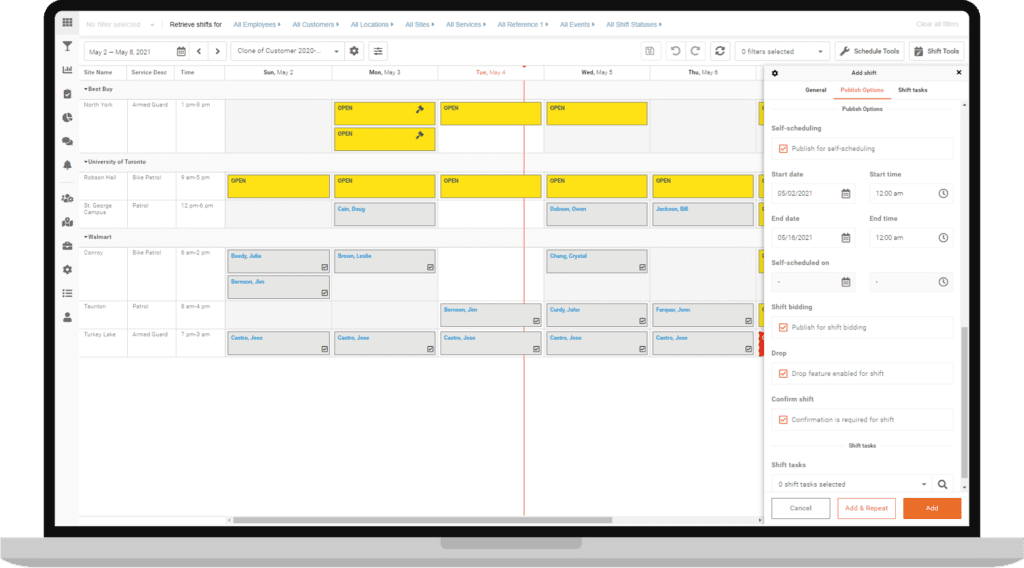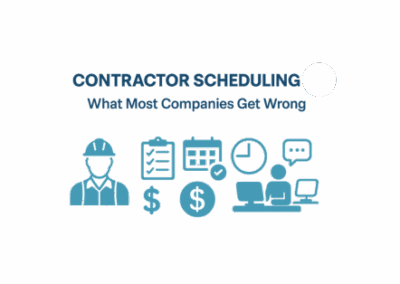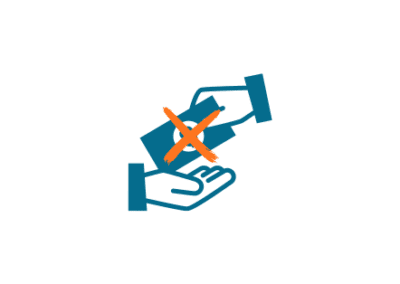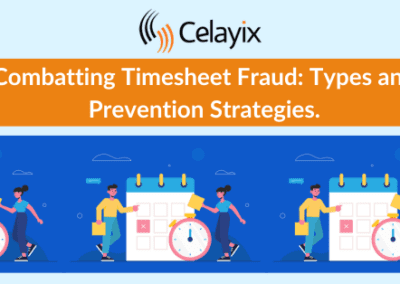With the ongoing challenges the healthcare industry faces in retaining nurses, it’s become a major priority to make all working environments as convenient as possible. During an unprecedented period, one tool that has given nurses some much-needed flexibility is self-scheduling.

An optimized schedule has always been important for healthcare facilities. And more and more are refining their processes to empower nurses with greater control over their work life balance. A healthcare facility operating 24 hours a day means that there will be great demand for nurses around the clock. If self-scheduling is utilized to its greatest effect, it can ensure that they aren’t working those same destructive shift patterns that are harming their mental and physical health. We’re going to look into how the healthcare industry can best utilize self-scheduling to optimize its entire operation. But before, let’s take a look at what it is.
Self-scheduling
Self-scheduling is when a scheduler gives the employee the autonomy to choose their own schedule. This process begins with the scheduler creating a range of open shifts, allowing the employee to self-select the shifts they would prefer to work. If utilized efficiently, this tool can:

- Boost employee morale
- Improve employee retention
- Increase productivity and overall performance
- Reduce absenteeism
- Save time scheduling
Self-scheduling takes the burden off the scheduler and gives employees more freedom to plan their life outside of work. It’s a highly popular tool because it helps in providing flexibility to the entire operation. So now that we understand what self-scheduling is, let’s look at why it’s become even more invaluable in recent times.
The impact of the COVID-19 pandemic
The impact of the recent COVID-19 pandemic has left nowhere for any nurse to hide. Their persistent and incredible work has kept the healthcare industry moving in one of the most unimaginable periods. Despite their commendable efforts, major concerns have arisen over nurse welfare with an influx in burnout cases.
Burnout has produced heightened stress levels which has had a drastic effect on nurses’ mental and physical health. This has largely been due to overscheduling, causing them to be exceedingly overworked. Research highlighted that nurses who didn’t have access to flexible work were 1.8 times more likely to suffer mental health problems. This is making it incredible difficult for the industry to retain its employees.
The great resignation
The healthcare industry saw 52,000 workers quit their job in 2020-21 because the overwhelming work conditions and an unforgiving schedule. Dubbed as the ‘great resignation’, healthcare facilities have been forced to improve their conditions for nurses or face a blowout of their entire operation.
This has driven healthcare facilities to utilize all the scheduling tools at their disposal. Picking the most impactful to improve their workforce’s durability.
Employees will always come first. So, it’s best to start with helping them.
The importance of a flexible schedule
Flexible working hours will give nurses more control over their lives. At this point, it’s becoming less about what they want. And more about what they need.
According to a FlexJobs and Mental Health America survey, 92% of healthcare respondents said that flexible work gives them an improved quality of life. As experts in time & attendance, we know the impact self-scheduling can have in increasing job satisfaction. And with levels seemingly at an all time low, it’s important that this tool is being utilized to the maximum. So with that being said, let’s explore how the healthcare industry can best utilize self-scheduling for nurses.
Employee scheduling software
The first step that a healthcare facility must take in utilizing self-scheduling is to integrate a best-of-breed employee scheduling software. Let’s go over why it’s an important start to utilizing self-scheduling for nurses.

How does it benefit nurses?
Using employee scheduling software will allow nurses to choose the shifts they work by selecting them in an app that’s personal to them. Anybody who contributes to creating their own schedule is far more likely to adhere to it. And the simplicity of planning your schedule through the click of a button is something that all nurses will value immensely.
But its not just great for the nurses. It’s great for everybody.
Streamlining the entire scheduling process
When you’re using self-scheduling, it’s important that it can communicate with other tools in your schedule to help cope with change. Let’s look at some:
Shift drop – There’s going to come a multitude of times when a nurse wants to drop a shift they’ve already self-scheduled for. Employee scheduling software will allow you to use a shift drop tool which can recreate the shift as open.
In-app chat – Got an issue with an upcoming shift or while on shift? This will give nurses an easy way to communicate any preferences or issues they may have when it comes to any of their shifts. This will help supervisors to plan accordingly.
Autofill – A dropped shift will mean that a new shift now needs to be covered. May supervisors choose autofill as a quick fix. You can create rules which help to decipher the best-fit replacement who is available to work the shift.
Whichever tools you choose to use, it’s important that nurses are treated fairly. Let’s dive in to how supervisors can ensure that.
Compliance tracking
Implementing employee scheduling software was the first step to empowering nurses who want to self-schedule. But it’s important that they cannot overstep the empowerment they’re given or you’ll be faced with an imbalanced schedule.
Compliance tracking is ensuring that metrics are in place to control your schedule. Putting these measurements in place will ensure that nurses do not work over their required hours each week and can only work on the days their account settings allow. For instance, a nurse may be set to work a maximum of 40 hours per week from Monday to Friday.
What will this mean?
This will mean that an employee can only self-schedule for shifts that don’t exceed their 40-hour limit on the days they’re permitted to work. Not only is it useful in reducing overtime, but also controls the demand for work by assigning shift patterns.
If a shift doesn’t comply with the measurements, then it will not show up as a self-schedule option in the employee scheduling app. This saves supervisors a copious amount of time by avoiding any scheduling conflicts. Self-scheduling for nurses can be measured in other ways too. A popular option is by qualifications.
Apply qualifications
When it comes to self-scheduling for nurses, supervisors must ensure that they’re competent enough to work the shift. Your employee scheduling software will allow you to input qualifications per employee, site and service. And this means that when a nurse looks to self-schedule, they’ll only be able to pick up shifts they’re capable of fulfilling.

The healthcare industry is invaluable and the pressure allows no room for error. So perhaps, create a rule that means a certain number of experienced nurses need to be on site at any given time. It’s a great structure for training the newer nurses too. And this can help to put the brakes on the infamous growing skills gap.
Provide a lengthy period for self-scheduling
You can give nurses all the self-scheduling opportunities in the world. But if they don’t have enough time to choose which shifts they want to work, it devalues the entire process and its benefits. Providing nurses with a self-scheduling tool that gives them complete autonomy over their schedule is exactly what you should be looking to do. By giving them an adequate amount of time to plan their own schedule, you’re also giving them the chance to create a healthy work-life balance.
Make sure you’re clear on the dates you’ll publish your open shifts. That way, the nurses will be less likely to face any last-minute scheduling headaches.
Have a plan for time off requests

No matter how efficient your self-scheduling is, time-off requests can always pose difficulties. Supervisors don’t want to be faced with a hoard of time off requests coming through in the most desired periods of the year. And so, a guideline on time off requests must represent the holiday types and when they can be taken.
Making this abundantly clear to nurses will save you a great deal of hassle in the long run.
A balanced plan
A plan for time off requests needs to bring balance. That may mean you define exactly how many days nurses can take off. Or how many nurses can be off on a single day. And if you use rotating schedules between different departments, this will need to be considered too.
Allowing nurses to ‘shift trade’ means that they can swap shifts within their associated scheduling units. So rather than reverting to your autofill for a replacement, the nurses may be able to settle a scheduling issue themselves.
So, how should you utilize self-scheduling for nurses?
Offering your nurses self-scheduling can strike the perfect balance between filling your schedule and keeping a happy and healthy workforce at its most productive. Giving them autonomy over their schedule helps to boost their morale and give them the work-life balance they deserve. On the other hand, the healthcare industry will be benefitting from a productive workforce that are motivated to make their efforts count. But in order to utilize self-scheduling at it’s very best, healthcare facilities will need to ensure they’re operating with a best-of-breed employee scheduling software.
As the healthcare industry was forced to adapt to unprecedented levels of demand, employee scheduling software remained a vital piece of software that helped to navigate them throughout. Even during a more recent and stabilized period, it’s still at the forefront of every scheduling decision healthcare supervisors need to make.
Self-scheduling will always provide an extra level of freedom to both nurses and their supervisors. But no matter what kind of freedom you’re willing to give, it needs to be controlled. If you integrate an employee scheduling software that allows you to best utilize your self-scheduling for nurses, then it also has the capacity to optimize your entire operation. It all starts with choosing the right platform to take your performance to the next level. If you’d like to find out more about how Celayix can help you with your nursing workforce management, contact us today!



